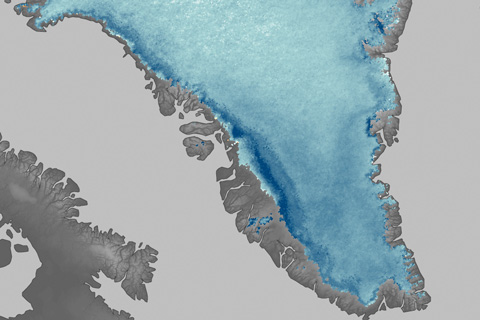
Melt ponds, snow loss, and other warming-induced changes are making the surface of the Greenland Ice Sheet far less reflective in the summer than it was even a decade ago. The darker ice surface absorbs more sunlight than it once did, accelerating warming and melting.

Shallow melt ponds on the surface of consolidated sea ice act as skylights that promote massive under-ice phytoplankton blooms. These under-ice blooms may boost estimates of Arctic phytoplankton productivity by a factor of 10.
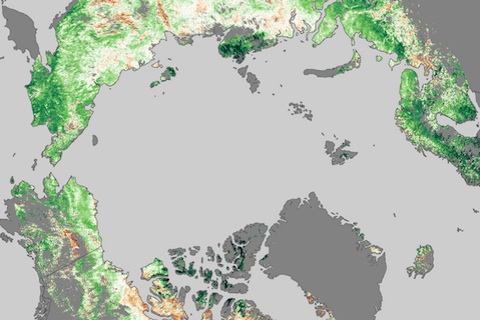
Few real-world signs of climate change are easier to read than changes in the growing season of familiar vegetation. Most of the high-latitudes of the Northern Hemisphere are experiencing longer growing seasons now than they did more than two and half decades ago.
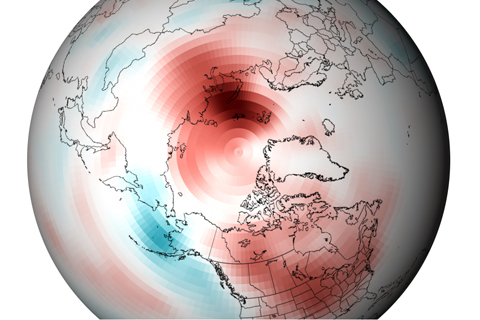
On a yearly basis, Arctic temperatures are strongly influenced by natural climate patterns, including the Arctic and North Atlantic Oscillations. Over the span of a decade, though, Arctic amplification of climate change is evident: no part of the Arctic was cooler than the long-term average.

The 2012 Arctic sea ice extent was nearly 50 percent smaller than the long-term (1979-2000) average. For sea ice to have shrunk to half its historic summer extent is as much a transformation of the environment as if half the forests of New England had been replaced by cactus.

For James Overland, an Arctic oceanographer at NOAA’s Pacific Marine Environmental Laboratory, six exceptionally slushy summers in a row in the Arctic demanded an explanation that went beyond the obvious: that global warming is raising the Arctic’s temperature. After analyzing winds and pressure patterns, Overland and several colleagues documented an unusual shift in the prevailing June winds—from westerlies to southerly—that amplified Arctic warming and sea ice melt.
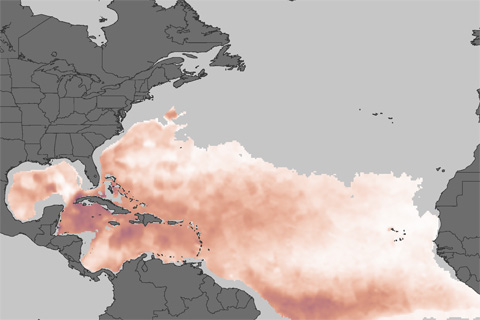
With the end of the most active part of the Atlantic hurricane season approaching, there is still plenty of water in the western Atlantic basin that is warm enough to fuel hurricanes.
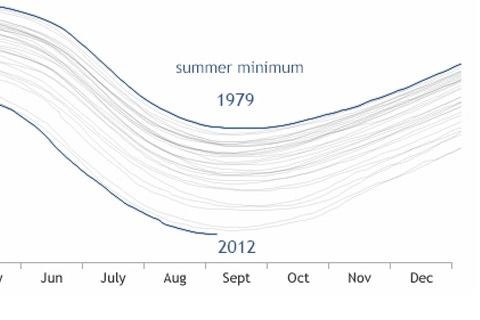
Arctic sea ice extent set a new record low at the end of the summer melt season on September 16, 2012. But extent is not the only quality of the ice that is changing. Wind and ocean circulation patterns are conspiring with a warmer climate to reduce the amount of year-round (multi-year) ice, transforming the remaining ice into a younger, thinner version of its old self.
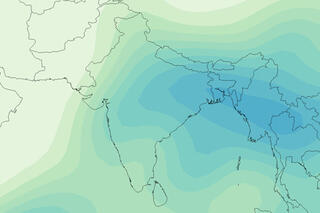
Arrival of monsoon eases India drought
September 5, 2012
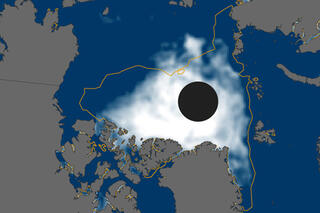
Arctic Sea Ice Breaks 2007 Record Low
August 27, 2012